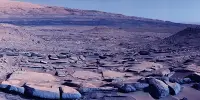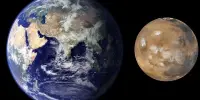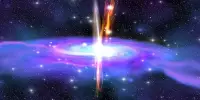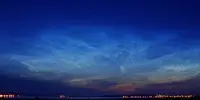Approximately 2,200 light-years from where you are are the Cheerio-shaped leftovers of a dying star — remnants that create the Ring Nebula, which is remarkable for its structure. On Monday (Aug. 21), scientists reported that the James Webb Space Telescope had struck gold once more, providing a really lovely new perspective on this classic cosmic halo.
“We were astounded by the amount of detail in the images when we first saw them.” “The bright ring that gives the nebula its name is made up of about 20,000 individual clumps of dense molecular hydrogen gas, each about as massive as the Earth,” Cardiff University’s Roger Wesson said in a statement.
The Ring Nebula (also known as Messier 57) is regarded as one of the best examples of a planetary nebula we have so far. It is not to be confused with one of the JWST’s very first photos, the Southern Ring Nebula. However, one may argue that the name “planetary nebula” is a tad deceptive for this light-year-wide display. It has absolutely nothing to do with planets. Planetary nebulas are regions of cosmic gas and dust that originate from the outer shells of dead stars, in this case a spherical and sun-like one.
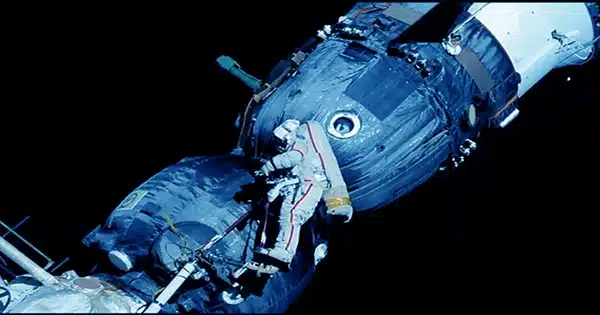
“Planetary nebulas were once thought to be simple, round objects containing a single dying star in the center.” They were named from their hazy, planet-like appearance when viewed via small telescopes, according to Wesson. “That star was still a red giant shedding most of its mass only a few thousand years ago.” As a final farewell, the heated core ionizes, or warms up, the evacuated gas, and the nebula replies with a multicolored light emission.”
What did the JWST find?
If you’re wondering what you’re looking at, the European Space Agency (ESA) produced a beautiful picture of the Ring Nebula from this angle.
According to the agency, we’re looking almost directly down one of the structure’s poles in this new photograph, and the brilliantly colored barrel of material is pointing away from it. Keep in mind that this scenario is actually in three dimensions. So, at the heart of this nebula, which ESA compares to a “distorted doughnut,” there’s a lot of lower-density material packed in. That is also pointing away from us.
A star in the center of the entire edifice is on its way to its final doom. It is on its way to becoming a white dwarf, sometimes known as a corpse star. The moniker “white dwarf” comes from the fact that they represent the ultimate stage of star evolution.
While the fading star is dying, it appears to be ejecting its outer shells of gas, which is what causes the colorful “ring” part of the Ring Nebula seen in the new JWST image.
According to ESA, the JWST’s army of cutting-edge infrared sensors enabled it to gather photos with “unprecedented spatial resolution and spectral sensitivity” of all that cosmic pandemonium. This implies that the space telescope, which is nearly a million miles (1.6 million kilometers) from Earth, was able to uncover insights about the Ring Nebula’s complicated structure that scientists had previously overlooked.
The JWST, for example, revealed information about the inner ring’s filament structure as well as around ten concentric “arcs” in the phenomenon’s outer regions by recording infrared light wavelengths emitted by the nebula, otherwise known as light wavelengths unseen to the human eye. Those target-shaped features took me by surprise.
“These arcs must have formed about every 280 years as the central star was shedding its outer layers,” Wesson added. “There is no known process that has that kind of time period when a single star evolves into a planetary nebula.” Instead, these rings imply the presence of a companion star in the system, orbiting nearly as far away from the central star as Pluto orbits our sun.”
“As the dying star shed its atmosphere, the companion star shaped and sculpted it,” Wesson explained, emphasizing that “no previous telescope had the sensitivity and spatial resolution to uncover this subtle effect.”
The JWST’s abilities: On that note, these data neatly highlight that the promise of this machine, which was originally an ambitious fantasy, has been fully achieved.
In a nutshell, the JWST’s mission is to show us objects in the cosmos that are lighted in the infrared area of the electromagnetic spectrum; things that are far beyond the capacity of our unaided eyes and, indeed, some of our most powerful instruments.
“We realized that Webb observations would provide us with invaluable insights,” Wesson explained, “because the Ring Nebula fits nicely in the field of view of Webb’s NIRCam (Near-Infrared Camera) and MIRI (Mid-Infrared Instrument).”
The researchers were able to detect some “curious spikes” pointing directly away from the central star within the ring using the JWST. These so-called spikes were supposedly barely discernible in Hubble Space Telescope photos. “We think these could be due to molecules that can form in the shadows of the densest parts of the ring, where they are shielded from the direct, intense radiation from the hot central star,” Wesson explained.
To delve into the technical details of the discoveries, Wesson adds that the scientists discovered a small band of emission emanating from polycyclic aromatic hydrocarbons, or PAHs, which are molecules within the ring. PAHs are carbon-bearing compounds, but they were not predicted to originate within the nebula analyzed, which is relevant for these latest JWST findings.

